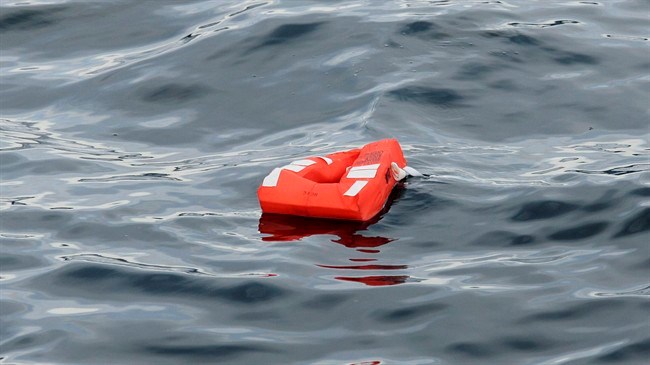VANCOUVER - Data recovered from a ferry that sank off the coast of British Columbia seven years ago, killing two passengers, depicts a routine voyage until the ship missed a scheduled turn and sailed straight into an island, a crew member's criminal negligence trial heard Tuesday.
An expert witness took Karl Lilgert's trial through data recorded by the ship's electronic chart system, which the court heard is akin to the ferry's "black box," recording the ship's location, speed and information about any other vessels in the area.
Lilgert is charged with criminal negligence causing the deaths of two passengers, Gerald Foisy and Shirley Rosette, who haven't been seen since the Queen of the North passenger ferry sank in the early hours of March 22, 2006.
Lee Alexander, who teaches at the University of New Hampshire and is an expert in electronic marine navigation, was asked by the RCMP to analyze data from the ferry's electronic chart system. The data was stored on a hard drive recovered by a robotic submarine, which was sent several hundred metres below the ocean surface to the sunken ship.
Alexander said the electronic chart system collects information from instruments such as GPS and radar to plot the ship's position on digital marine charts. That information is displayed on a screen located in the ship's bridge and is recorded so it can be reviewed later.
Alexander reviewed that data numerous times. He said the only thing that appeared out of the ordinary during the sailing was a single, missed course alternation, which occurred shortly after midnight as the ferry entered Wright Sound after passing through a narrow strait known as Grenville Channel.
"The first part of the voyage is fairly routine, nothing unusual," said Alexander.
"As the vessel approached midnight, there should have been a turn. This did not occur and the vessel proceeded on a straight course to Gil Island."
The jury watched a video replay of the ship's electronic chart data, with a small circle representing the ship's position tracking down a map of B.C.'s Inside Passage.
The display showed two dotted lines drawn onto the map — one representing the ship's planned course, and another representing the ship's actual path through the water.
For the most part, those lines overlapped as the ship maintained its intended course for the first four hours of its journey.
But as the ferry entered Wright Sound, those lines split. Instead of veering slightly left along the planned route, the ship sailed straight out of Grenville Channel, missed the turn and didn't adjust its course for more than 20 minutes before hitting Gil Island, according to the video replay.
Alexander said he analysed the raw data, and it appeared to be intact despite having been recovered from a hard drive sitting deep underwater.
He said the GPS information is the most accurate data available to plot the ship's position before the sinking.
The electronic chart system that recorded the ship's position has become a key focus of the trial.
The Crown has pointed to the chart system to support its claim that Lilgert failed in his duties as navigational officer when the ship missed the turn and sailed directly toward Gil Island. The Crown has told the jury the ferry took no evasive action or even slowed down before striking the island.
The defence has argued Lilgert was faced with poor training and unreliable equipment, suggesting the electronic chart system was especially problematic.
Lilgert's lawyers have said the electronic chart system was frequently inaccurate, sometimes placing the ship's position high up on land as it sailed down the coast. They've said crew members referred to the device as a "box of lies."
Lilgert was the fourth officer on the ship at the time of the collision. The trial has heard he was on the bridge with quartermaster Karen Bricker, his former lover, in what was their first time working alone together since their affair ended.
Lilgert has pleaded not guilty to two counts of criminal negligence causing death. His trial, before a jury, is expected to last up to six months.



